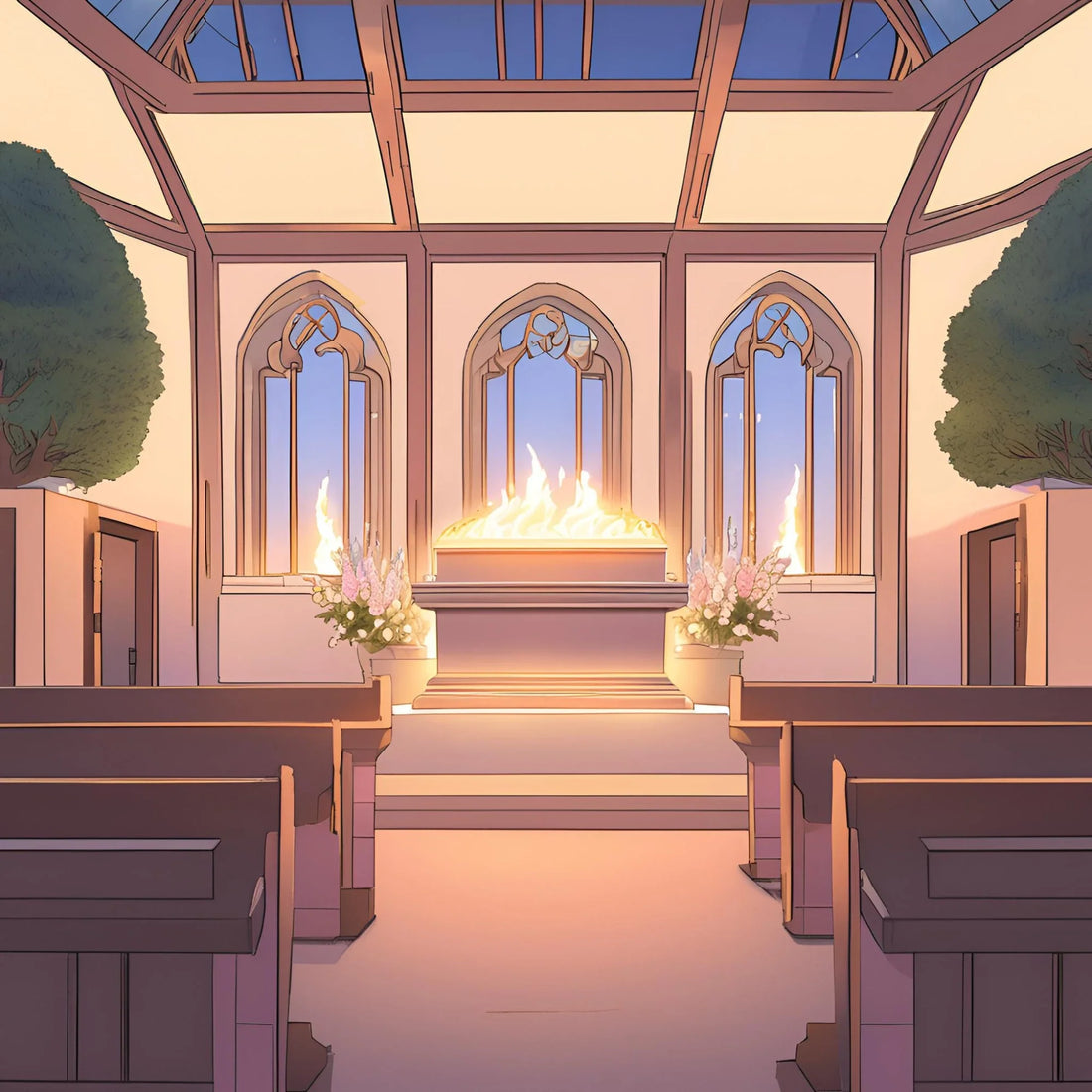Understanding how cremation works is crucial for those considering this option for themselves or their loved ones. This guide explains the entire cremation process, answering common questions about what happens before, during, and after cremation.
What Is Cremation Process?
Cremation is a process that reduces the human body to bone fragments through high-temperature exposure. These fragments, commonly referred to as "ashes" or "cremated remains," can be stored in urns, scattered, or incorporated into keepsakes. Cremation is chosen for its simplicity, affordability, and environmental benefits compared to traditional burial.
How Does Cremation Work for Humans?
Step 1: Identification and Authorization
According to National Funeral Directors Association, Before cremation can proceed, the deceased is identified using legal documentation. A family member or executor signs authorization paperwork allowing the process to begin. This ensures the correct individual is cremated.
Step 2: Preparing the Body
The body is prepared by removing medical devices such as pacemakers, which can be hazardous during cremation. Jewelry and personal belongings are removed and returned to the family. The body is then placed in a combustible container, usually made of wood or cardboard.
Related Reading: How Is A Body Prepared For Cremation?
Step 3: The Cremation Process
The container is placed in the cremation chamber (or retort), a specialized furnace designed to handle high heat. The temperature in the chamber ranges from 1,400 to 1,800 degrees Fahrenheit. This heat vaporizes soft tissues, leaving only bone fragments behind.
Resource: Cremation Association of North America (cremationassociation.org)
Step 4: Processing the Remains
After cooling, the remaining bone fragments are ground into fine particles using a machine called a cremulator. These processed remains are commonly referred to as "ashes" and are given to the family in an urn or temporary container.
How Long Does Cremation Take?
The actual cremation process takes about two to three hours, depending on factors such as body mass and the cremation chamber's efficiency. Additional time is required for the cooling and processing of the ashes, so families typically receive the ashes within a few days.
What Happens to the Body During Cremation?
When the body is placed in the cremation chamber, the high temperatures reduce it to basic elements. Tissues vaporize, while the skeleton remains intact until it is processed. Cremation temperature ensures a clean and efficient process, leaving no traces of organic material except bone fragments.
Do Bodies Scream During Cremation?
No, bodies do not scream during cremation. The process is conducted in a sealed chamber, and no sounds are emitted from the body.
Which Part of the Body Does Not Burn During Cremation?
Bone fragments do not burn completely during cremation. Instead, they are ground into ashes as part of the final processing step.
Cremation Ashes: What to Expect
The ashes you receive are finely ground bone fragments, typically gray or white in color. They are odorless and sterile, and they can weigh between 4 to 8 pounds, depending on the individual's size.
How Are People Cremated in a Crematorium?
A crematorium is a facility designed for cremation. The process involves:
- Placing the body in a cremation chamber
- Exposing it to intense heat
- Processing the bone fragments into ashes
Crematoriums are equipped with advanced technology to ensure a safe and respectful process.
Related Reading: Should You Have A Viewing With Cremation?
How Does Water Cremation Work?
Water cremation, also known as alkaline hydrolysis, is an alternative method of cremation. This process uses water, alkali, and heat to accelerate decomposition. The body is placed in a specialized chamber where it breaks down into a sterile liquid and bone fragments. Water cremation is considered more environmentally friendly than traditional methods.
Resource: (bioresponsesolutions.com)
Common Questions About Cremation
- How is Cremation Done?
Cremation involves reducing the body to bone fragments using high heat in a cremation chamber, followed by processing the remains into ashes.
- What is a Crematorium?
A crematorium is a facility equipped to perform cremations. It includes a cremation chamber, processing equipment, and spaces for family ceremonies.
- Do Teeth Burn During Cremation?
Teeth often calcify during cremation but are usually reduced along with bone fragments during processing.
- How Long Does It Take to Get Ashes Back After Cremation?
Families usually receive ashes within 3–7 days, depending on the facility.
- How Hot is a Cremation Oven?
A cremation oven operates at temperatures between 1,400 and 1,800 degrees Fahrenheit.
- When Did Cremation Start?
Cremation dates back thousands of years, with evidence from ancient civilizations such as Greece and India. Modern cremation practices began in the late 19th century.
What Happens to a Body in a Coffin Over Time?
For comparison, a body in a coffin takes several decades to decompose fully, depending on environmental factors. Cremation offers a faster, more controlled process with minimal environmental impact.
Related Reading: How Long Does It Take for a Body to Decompose in the Casket?
Why Caskets Matter Even for Cremation
Some families choose to use a casket for ceremonial purposes, such as a viewing or funeral service, even if the body will be cremated. Titan Casket offers a variety of cremation-friendly caskets designed to comply with crematorium requirements. These caskets are fully combustible or can be returned to the family if not used in the cremation process.
Benefits of Cremation-Friendly Caskets:
- Provide dignity during viewing or services
- Available in cost-effective designs
- Suitable for crematorium standards
Conclusion: Choosing Cremation
Whether considering traditional flame cremation or alternatives like water cremation, understanding how cremation works empowers individuals to make informed choices. Cremation provides dignity, simplicity, and flexibility, allowing families to honor their loved ones in meaningful ways.
Plan Your Farewell with Grace – Our Pre-Planned Caskets Offer Peace of Mind!

![Upgrade to Premium Weight [18-gauge steel]](http://titancasket.com/cdn/shop/products/casketthicknesswithnumbers.png?v=1680642906&width=533)









